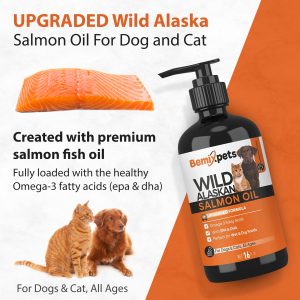Joints are wonderful things, they help your dog move, jump, chase, and have fun. But sometimes joints are painful. This can keep your dog from jumping up and cuddling on the couch with you or from playing fetch with you. It is a sad thing to see a dog in pain, especially when it keeps him from doing things he used to love.
In this article, we are going to discuss symptoms of joint pain, possible reasons for joint pain, and some actionable ways to prevent and treat joint pain.
Contents
Symptoms Of Joint Pain
Dogs are very good at covering up their pain. Sure some can be more dramatic than others and cry the whole time you try to trim their nails. But when it comes to joint pain the signs might be hard to read. The first sign might be your dog jumps up on the couch less or doesn't want to walk as far. The joints may also feel warm or swollen and the dog may lick his joints. Sometimes he may change the way he normally sits or have trouble getting moving after laying down. A dog with joint pain may also choose to not change positions as much. Choosing to stand rather than get comfortable if he thinks you might leave the room soon. More obvious signs might be that your dog limps or holds a leg up at a weird angle.
Reasons For Joint Pain
There are many reasons a dog may develop joint issues. Here are a few of the more common reasons.
Joint issues can develop at an early age. Puppies joints can be very sensitive while the pup is still growing. It is a good idea to protect the pup from excess jumping. If the puppy jumps too much it may cause the pup to grow abnormally. On leg may grow longer than another which will throw off his alignment for the rest of his life. This will cause joint pain.
It is important to note that dogs, especially large dogs like Golden Retrievers, may be prone to joint dysplasia. In addition to making sure you have an amazing breeder be sure to check the environment the large breed puppies are raised in. If the floor is slick and the puppies have a hard time walking on it they are more likely to have and get dysplasia.
If you decide to spay or neuter your dog be sure NOT to do the surgery before your dog is 24 months old. Spaying or neutering your dog before this time could result in permanent joint damage. Early spay/neuter affects the hormones which affect the growth of the puppy, this can cause abnormal growth and joint pain. Early spay/neuter can also result is a 70% increase in hip dysplasia and doubles the risk of bone cancer.
It is also a good idea to minimize vaccines in your dog. Excessive vaccination can cause your dog to destroy the cartilage in his joints. Be especially careful of the distemper vaccine as this has been linked with the most joint damage. Opt to do a titer test, instead of vaccination.
If your dog already has joint pain it is a good idea to avoid non-steroidal anti-inflammatory drugs (NSAIDs). This is likely what your vet will prescribe. However, NSAIDs can cause a loss of cartilage in the joints. Loss of cartilage in the joints is one of the reasons your dog is in pain already! NSAIDs can also cause a host of other negative side effects.
It is especially important to avoid grains and high-carb foods such as legumes. These have no place in a carnivores (dog's) diet and will cause great, body-wide inflammation. This inflammation will cause not only joint issues but a host of other issues too.
So, those are some causes now let's look into some natural ways to help treat and prevent joint issues in your dog.
Food Therapies
You may be wondering "what about kibbles with added glucosamine?" While these kibbles do have some glucosamine added, it isn't nearly enough. Dogs should get 20mg of glucosamine per pound of body weight. That's 1,400mg of glucosamine per day for a 70 pound Golden Retriever. A lot of kibbles have 300mg of glucosamine per kg of food. To get enough glucosamine for your 70 pound Golden he would have to eat about 40 cups of kibble a day! So, sorry to burst your bubble but glucosamine kibbles are just a marketing ploy. They won't really help your pet at all.
Nonetheless, food can be one of the single most important elements of preventing and treating joint issues. A raw, species-appropriate diet focused on reducing inflammation will help to reduce pain and prevent joint issues.
Green lipped mussels can be a great addition to your dog's diet. You can find these in a freeze-dried treat or powder. Green lipped mussels are a great source of omega fatty acids and minerals. They are also an excellent source of glucosamine and chondroitin which are essential for healthy joints.
Trachea can be feed raw or dehydrated. This food is basically made of cartilage. Your dog can break this cartilage down and then use it to make cartilage for himself.
Chicken feet, duck feet, pigtails, oxtails, and knucklebones, are all full of natural glucosamine. When your dog eats these bones raw he can use the glucosamine found in them to help his joints.
Bone broth is a great addition to your dog's diet as well. This is a great natural source of glucosamine, chondroitin, and hyaluronic acid, as well as, other joint supporting compounds.
Blueberries contain many powerful antioxidants that can help to protect your dog's joints.
Probiotic-rich foods include kimchi, kefir, and other foods containing live and active cultures. You likely think of probiotics for gut health. But the more we have been learning the more we are realizing that a healthy gut is important for whole-body health. So help your dog's gut out by feeding probiotic-rich foods or a good probiotic supplement.
Herbs To Help
Boswellia helps to repair damaged tissue.
Licorice root helps to reduce swelling and is also anti-inflammatory.
Gotu Kola helps to stimulate collagen synthesis to heal tendons and ligaments.
Comfrey, this reduces bone inflammation.
Chamomile is a great anti-inflammatory, helps to relieve pain, and reduce swelling.
Cayenne can help to ease pain.
Bromelain relaxes muscles, can help with spasms and reduces inflammation.
Turmeric helps to reduce inflammation and is a powerful antioxidant. Turmeric works best after it is heated and has had fat and pepper added to it. However, you can just buy an organic turmeric supplement that should be ready to use as is.
Ginger is a great root to add to your dog's diet as well. This herb can reduce inflammation and increase circulation in older dogs. You can feed the fresh root to your dog, just be sure to peel the skin off it.
Ashwagandha also helps to reduce inflammation and has antioxidant properties.
Frankincense, yucca, and alfalfa can also help in various ways. Mainly to reduce inflammation.
Other Therapies
Omega-3 fatty acids are necessary for keeping your dog's inflammation in check. A high-quality omega-3 supplement will be very helpful for his joints and overall health.
CBD oil helps to decrease chronic inflammation, stop premature aging, and reduce pain.
Cold laser therapy may be an option for your dog. Many vets will offer this treatment. It may take several treatments to see improvment, though some dogs respond with the first treatment.
If your dog is overweight it will be helpful to help him lose some weight. A healthy weight will help to alleviate some of the extra pressure on the joints. This, in turn, eases pain.
Keeping your dog warm is a very important part. Most joints will be extra painful when cold. Be sure to provide your dog with a warm sweater in the winter. Some dogs will need this outside and others might need a sweater inside and a warm coat for outside. Be sure they have a nice warm place to sleep as well.
A nice thick orthopedic foam bed can be a great way to help your pet sleep comfortably. If your dog sleeps on the bed with you then providing him with a ramp to easily access the bed is a good idea. You can also get ramps for your couch and your car.
Acupressure, acupuncture, chiropractic care, and massage can all help bring mobility and pain relief to your aching pet. Be sure to work with qualified professionals, though you can practice massage at home. Listen to your dog and he will let you know if you are messaging too hard or if you are hurting him.
This one may seem silly but keeping your dog's nails short is essential. Long nails can throw off your dog's balance and cause him to walk differently. This change in walking can cause extra stress on his joints.
Exercise though painful is still very important to your dog. Swimming can be a great way to get exercise without putting stress on the joints. It's a good idea to put a lifejacket on your dog when swimming just to make it a little easier for him. Many vets offer hydrotherapy, essentially an underwater treadmill, for dogs. This could be another good option.
Conclusion
Whether your dog currently has joint pain or you are simply wanting to prevent joint issues there is a lot you can do. Being sure to provide your dog with appropriate food is paramount! You can also provide several different herbs and foods to support your dog's joint health.






Leave a Reply
You must be logged in to post a comment.